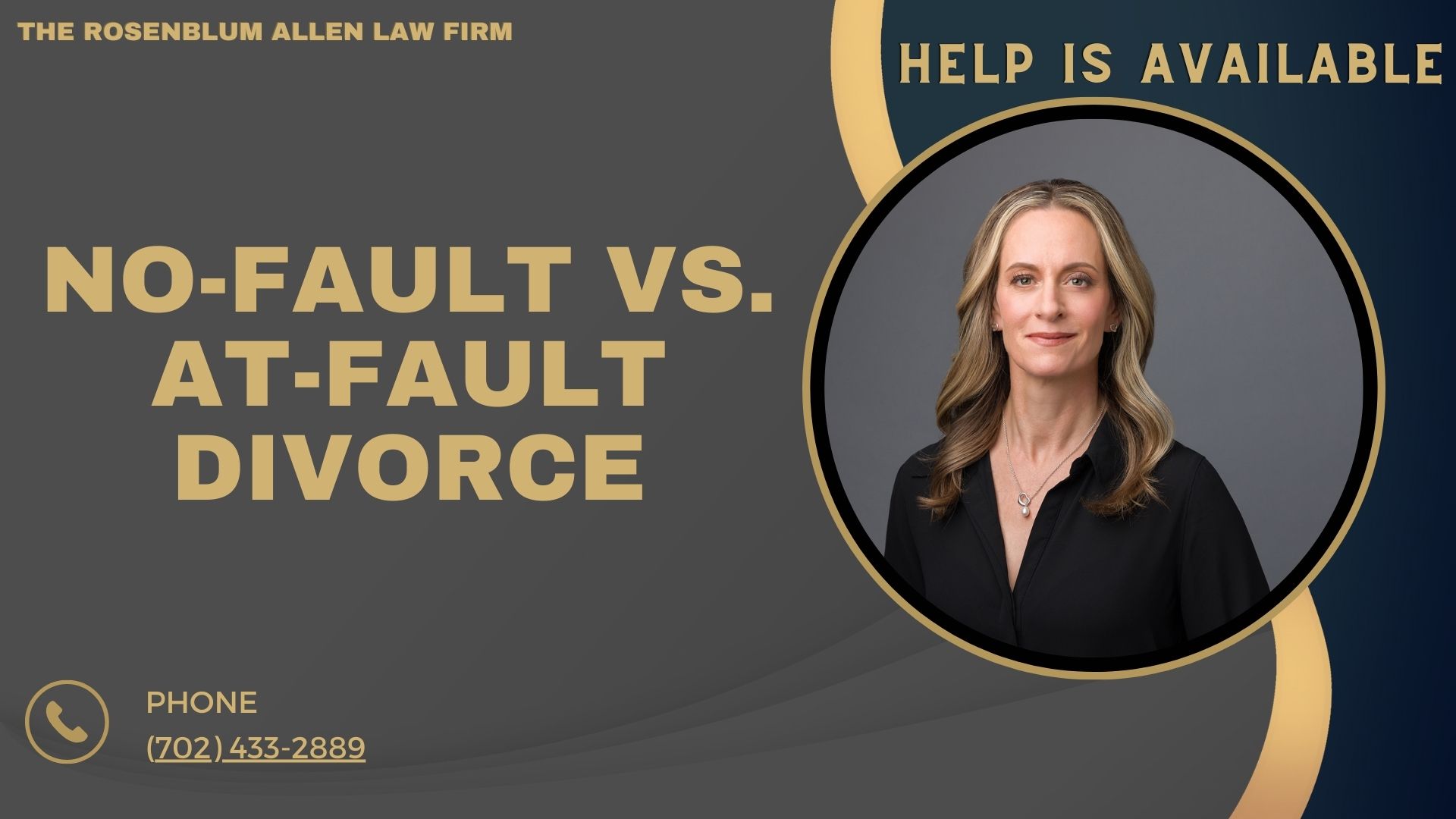Common Reasons for No-fault Divorce
Couples who file for a no-fault divorce often cite:- Irreconcilable differences: The couple cannot get along, and there’s no chance for reconciliation.
- Incompatibility: They realize their personalities, values, or goals don’t align.
- Irretrievable breakdown of the marriage: The relationship is beyond repair, with no specific party at fault.
At-fault Divorce
Definition of At-fault Divorce
An at-fault divorce occurs when one spouse claims the other’s behavior caused the marriage to fail. This can involve serious misconduct or violations of the marriage contract.Grounds for At-fault Divorce
The spouse filing for an at-fault divorce must prove specific allegations, such as:- Adultery: One spouse had an affair.
- Abandonment: One spouse left the other without any intention of returning.
- Cruelty: This can include physical or emotional abuse.
- Substance abuse: Ongoing problems with drugs or alcohol that harm the marriage.
Legal Differences Between No-fault and At-fault Divorce
Burden of Proof
No-fault Divorce Burden
In a no-fault divorce, no one needs to prove wrongdoing. It’s as simple as one or both spouses stating the marriage isn’t working.At-fault Divorce Burden
In contrast, at-fault divorces require evidence. The spouse making the claim must prove the grounds for the divorce, like providing proof of an affair or documenting abusive behavior. This need for evidence can make at-fault divorces more complex and time-consuming. It can also lead to more conflict between the spouses.
Impact on Divorce Proceedings
Length and Complexity
No-fault Divorce Length and Complexity
A no-fault divorce is often quicker and less complicated. Since there’s no need to prove fault, the process usually moves faster. Both spouses simply agree that the marriage can’t be saved. Many no-fault divorces are resolved through mediation or settlement agreements without court battles over who is to blame. This makes it an appealing option for couples looking for a smoother path.At-fault Divorce Length and Complexity
At-fault divorces tend to be longer and more complicated. When one spouse accuses the other of specific wrongdoing, they must gather evidence to support their claims. This could involve gathering documents, calling witnesses, or attending multiple court hearings. The accused spouse may also defend themselves, making the process even more time-consuming. In short, at-fault divorces can drag on for months or even years if the parties can’t agree.Court Involvement
No-fault Divorce Court Involvement
In a no-fault divorce, the court plays a more minor role. Many couples resolve matters privately through mediation or informal negotiations. The court steps in mainly to approve the final divorce settlement. Since the couple isn’t arguing about fault, the process tends to be less adversarial, and court appearances are usually minimal.At-fault Divorce Court Involvement
At-fault divorces often require much more court involvement. Judges may need to weigh in on the validity of the accusations. The accused spouse must present evidence, and the accused will have a chance to defend themselves. The court may schedule hearings to review the evidence and issue rulings. This higher level of court involvement makes at-fault divorces more formal and, often, more stressful.Impact on Division of Assets, Alimony, and Custody
Division of Assets
No-fault Divorce Asset Division
In a no-fault divorce, the division of assets is typically handled based on state laws. For instance, Nevada is a community property state, which means all assets acquired during the marriage are split equally between the spouses. Since no one is being blamed, the court focuses on dividing the property fairly without considering any wrongdoing by either party. This makes the process more predictable and less emotionally charged. The goal is to ensure both spouses walk away with an equal share of what was accumulated during the marriage.At-fault Divorce Asset Division
In an at-fault divorce, fault may affect how assets are divided. Some courts may consider one spouse’s bad behavior, especially if it had a direct financial impact on the marriage. For example, if one spouse wasted marital assets during an affair, the court might award the other spouse a more significant portion of the assets. However, this isn’t always the case; it varies from state to state.
Alimony
No-fault Divorce Alimony Consideration
In a no-fault divorce, alimony (or spousal support) is based on financial need, not on who was at fault. The court looks at factors like the length of the marriage, each spouse’s economic situation, and their ability to support themselves post-divorce. Fault is generally not considered when determining whether one spouse should pay alimony or how much.At-fault Divorce Alimony Consideration
In some cases, at-fault divorces can impact alimony. For example, if one spouse’s bad behavior (such as adultery or abuse) contributed to the end of the marriage, the court might order them to pay more in alimony. In other situations, a spouse found to be at fault might receive less alimony or none at all, depending on the circumstances and state laws.Custody Arrangements
No-fault Divorce Custody Approach
Regarding child custody in a no-fault divorce, the court’s primary focus is always on the child’s best interests. The fault doesn’t matter here. Instead, the court considers factors like each parent’s ability to care for the child, the child’s relationship with both parents and how the custody arrangement will affect the child’s overall well-being.At-fault Divorce Custody Approach
In an at-fault divorce, a spouse’s misconduct may influence custody decisions, but only if that behavior affects their ability to parent. For example, if one spouse has a history of substance abuse or cruelty, the court may limit their custody or visitation rights. When making these decisions, the court will always prioritize the child’s safety and stability.
Understanding the difference between no-fault and at-fault divorce is critical to deciding which path best fits your situation. No-fault divorces offer a more straightforward, less confrontational process, often with quicker resolutions and fewer court appearances. At-fault divorces, on the other hand, require proof of misconduct and can be more complex, potentially affecting asset division, alimony, and custody decisions.
Each type has its advantages and challenges. No-fault divorces focus on moving forward without blame, while at-fault divorces can offer an opportunity for justice when one spouse’s actions significantly impact the marriage. Ultimately, your choice will depend on your circumstances and your goals for the outcome.

Frequently Asked Questions
Can both no-fault and at-fault divorces be filed in every state?
No, not all states allow both options. Some states only offer no-fault divorces, while others allow you to choose between no-fault and at-fault grounds. It’s important to check your state’s specific divorce laws to know what options are available.
Does a no-fault divorce mean that neither spouse did anything wrong?
A no-fault divorce doesn’t mean that there was no wrongdoing in the marriage. It simply means that neither party has to prove any specific fault to get divorced. The focus is on ending the marriage without assigning blame, even if issues like infidelity or conflict existed.
Is an at-fault divorce more expensive than a no-fault divorce?
Generally, yes. At-fault divorces tend to involve more legal fees due to the need for evidence, court appearances, and possibly expert witnesses. The longer, more complicated process can drive up the costs compared to a simpler no-fault divorce.
Can a spouse contest a no-fault divorce?
In most cases, no. A no-fault divorce can proceed even if one spouse doesn’t agree. Since fault isn’t being argued, one spouse can’t contest the divorce based on disagreement with the decision to end the marriage. However, they can still contest aspects like property division or child custody.
Does the reason for the divorce affect child support?
No, the grounds for divorce, whether no-fault or at-fault, typically don’t impact child support. Child support is calculated based on state guidelines that consider factors like each parent’s income and the needs of the child, not marital misconduct.
Can a no-fault divorce be switched to an at-fault divorce later?
It depends on the state. In some cases, if new evidence of misconduct arises, a spouse may be able to amend the divorce filing to include fault-based grounds. However, many states require the grounds to be declared at the start of the divorce process.
Is there a benefit to choosing an at-fault divorce?
While more challenging, some people opt for at-fault divorces if they feel the other spouse’s behavior should be recognized in the proceedings. For example, proving adultery or abuse might lead to a more favorable outcome in terms of alimony or custody, depending on the state’s laws.

Further Reading
For our readers navigating the complexities of divorce, our lead attorney, Molly Rosenblum Allen, Esq., has meticulously crafted a comprehensive suite of resources. These resources are designed to provide clarity and guidance during this challenging time. Here’s a brief overview of the valuable resources available at your fingertips:
- Las Vegas Divorce Attorney: Delve into the specifics of divorce proceedings within the Las Vegas jurisdiction. Discover more.
- Nevada Divorce: Get an in-depth understanding of Nevada’s divorce laws and how they might affect your case. Learn more.
- Surviving Divorce: Navigate the emotional and practical facets of divorce, ensuring you emerge stronger on the other side. Explore here.
- What Happens If You Don’t Sign Divorce Papers: Uncover the consequences and your options if you or your spouse refuses to sign the divorce papers. Read further.
- Do I Need an Attorney to Get a Divorce: Understand the significance of legal representation in your divorce proceedings. Find out more.
- What is a Collaborative Divorce: Explore this alternative approach to divorce that promotes cooperation over confrontation. Delve into the details.
- How to Win a Divorce: Equip yourself with strategies to navigate your divorce successfully. Gain insights.
- Switching Lawyers During Divorce: Learn the hows and whys of changing your legal representation mid-divorce. Read more.
- How Long Does a Divorce Take in Nevada: Set realistic expectations by understanding the timeline of a divorce process in Nevada. Get informed.
- High Conflict Divorce: Navigate through the turbulence of a high-conflict divorce with strategic advice and emotional support. Seek guidance.
- Questions to Ask a Divorce Lawyer: Prepare yourself for consultations with a comprehensive list of critical questions to ask your divorce lawyer. Prepare your questions.
Each resource is tailored to address the unique challenges you may face, providing effective advice and insights to support you in your time of need.

Offsite Resources You May Find Helpful
Here are seven offsite resources that provide information about the difference between no-fault and at-fault divorce:
American Bar Association: The ABA provides a variety of resources on legal topics, including information on no-fault and at-fault divorce.
FindLaw: This online resource provides free legal information, a lawyer directory, and other resources on a wide range of legal topics, including the differences between no-fault and at-fault divorce.
Nolo: This site provides legal information for consumers and small businesses, including details on the differences between no-fault and at-fault divorce.
Justia: A platform that provides free legal information and a directory of attorneys for various legal issues, including the differences between no-fault and at-fault divorce.
Avvo: This website provides a directory of lawyers, legal advice, and other resources on a broad range of legal topics, including the differences between no-fault and at-fault divorce.
LegalZoom: An online legal technology company providing legal information and services to consumers and small businesses, including guidance on the differences between no-fault and at-fault divorce.
LegalMatch: This online legal matching service helps individuals find lawyers in their area, including divorce attorneys who can provide advice on no-fault and at-fault divorce.

What's Next?
Are you a Las Vegas resident looking for an experienced, professional divorce attorney?
Look no further than The Rosenblum Allen Law Firm.
We’re the top choice when it comes to finding the best representation.
Our team of dedicated attorneys has years of experience in dealing with all types of divorces, so no matter what your situation may be, we’ll handle it with ease.
Plus, our fees are incredibly reasonable compared to other lawyers!
Stop wasting time searching for somebody else—at The Rosenblum Allen Law Firm, we provide exceptional legal services that fit every need.
Do yourself a favor and give us a call today at (702) 433-2889: you won’t regret it!



